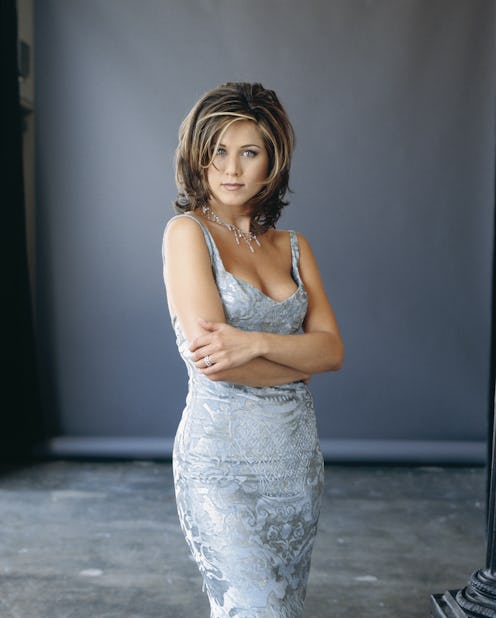Beauty
29 Years Ago, Rachel Green Debuted Her Signature Haircut On Friends
Name a more iconic TV show hairstyle. I’ll wait.

Try to name a TV show hairstyle more iconic and well-known than “the Rachel.” The moment you see someone with a shoulder-length shaggy bob and thick, face-framing layers, the mind immediately jumps to mid-’90s-era Rachel Green from Friends where the look was made famous by our gal Jennifer Aniston.
The Rachel first came into existence the year the show premiered in 1994 — an astonishing 29 years ago. (What is time?) For the first 19 episodes of Season 1, Rachel had long, fluffy, voluminous hair. But the world changed when, in Episode 20 — called “The One With the Evil Orthodontist” — she stepped out with the now-famous look.
The cut, instantly dubbed “The Rachel”, became so wildly popular you didn’t even have to be a Friends fan to know what it was. It was splashed across magazine covers and quickly became the most requested haircut of the ’90s. In fact, it’s estimated that over 11 million people have gotten a Rachel cut of their very own.
The shaggy, layered lob was created by hairstylist Chris McMillan and colored by Michael Canalé. McMillan trimmed Aniston’s long hair to her shoulders to get rid of damage before adding the face-framing layers to hide her grown-out bangs. Aniston wore it through Seasons 2 and 3, giving fans plenty of time to fully appreciate the look in all its glory — and it’s been a part of the zeitgeist ever since.
According to Vogue, McMillan pulled inspo ahead of the cut from three unlikely places: model Beri Smithers’ chin-length bob, the rounded blowouts stylist Garren was giving model Amber Valletta at the time, and the way California surfers wore their hair. Combine it all together and you can see how the three seemingly random elements work together to create the loose and shaggy yet slightly-coiffed vibe of the Rachel.
Interestingly enough, McMillan reportedly had to do some convincing to get Aniston to lose the length she had at the time. Ultimately, the two went through with the cut and kept it up until the beginning of Season 3 in 1996, at which point Aniston opted to grow out her strands.
Still, even though literally millions of people loved the Rachel, Aniston wasn’t a fan. According to Allure, she didn’t think it was her best look, and even told reporters that McMillan was the “bane of her existence” because he “started that damn Rachel.” While the two stayed friends — there wasn’t any real beef over the Rachel — Aniston has mentioned to various outlets that the look was too tough to maintain and even tougher to replicate without McMillan’s help.
While Aniston left the look behind in 1996, the Rachel has had many moments since. It came back in 2021 during the Friends reunion, which took a look at some of the best episodes — and all the gloriously ugly ’90s outfits that Rachel, Phoebe, and Monica had to offer. At the time, searches for the Rachel haircut increased a whopping 179% compared to the month before, according to beauty retailer JustMyLook. (That’s a lot of baby millennials and Gen Z-ers walking around with shaggy layers.)
The Rachel had another moment in 2022 thanks to the rise of the midi flick haircut trend, though this time the look was slightly updated: the length and layers were similar to the OG, but the curled ends had a more retro-chic ’60s flare.
Apparently, the call of the Rachel is so strong that even Aniston had to take another stab at it with her modern take on the cut this year. The star was spotted with those iconic chin-grazing layers at the Murder Mystery 2 premiere instead of her go-to beachy waves. Thanks to the golden highlights, it gave everyone Friends vibes — in the best way. It just goes to show that the Rachel may fade away, but the haircut never dies.
This article was originally published on